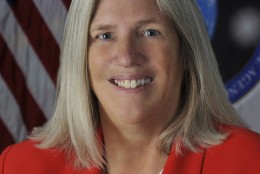Facilities/Construction
-
Now that Congress looks poised to reject the Defense Department’s requests for another round of base realignments and closures (BRAC) for a fifth year in a row, the Air Force has decided to start its own process to calculate how valuable each of its bases actually are to the various missions it performs.
June 24, 2016 -
Rayburn House Office building is flooding, according to several sources on Twitter.
June 21, 2016 -
OPM allowed each federal agency to decide how it would deal with the ongoing Metro Safetrack maintenance plan. Here's how they've responded.
June 08, 2016 -
One of government's leading officials on the Freedom of Information Act says agencies need more open channels of communication with members of public seeking government records.
June 07, 2016 -
Navy Secretary says the maritime services haven't devoted much attention to nuclear as a shore-side "alternative" energy option thus far, but it's time to start.
June 02, 2016 -
Washington is about to get a new memorial to World War I. After a years-long effort, the World War I Centennial Commission chose designs by Chicago Architect Joe Weishaar and New York sculptor Sabin Howard. Weishaar joins Federal Drive with Tom Temin to talk about the designs.
May 27, 2016 -
Assistant Secretary of the Army Katherine Hammack is leading the Army’s charge toward more sustainable bases. The Army has some ambitious near-term goals for energy savings.
May 24, 2016 -
OPM acting Director Beth Cobert gives agencies initial guidance to deal with the impending closures of the Washington, D.C. area subway system. In the memo, OPM recommended agencies review and expand flexible workplace policies.
May 20, 2016 -
Rep. Jason Chaffetz (R-Utah), says a bill is being drafted to address Postal Service reforms. The reforms include addressing the mandate to pre-fund health retiree benefits, as well as merging the USPS Board of Governors and the Postal Regulatory Commission.
May 11, 2016 -
The National Geospatial Intelligence Agency is the latest federal agency to establish a permanent presence in Silicon Valley. Agencies are feeling the need to be closer to the innovators in order to feed off their energy, get involved in partnerships and stay on top of the cutting edge of innovation.
May 11, 2016 -
The House Border and Maritime Security Subcommittee questioned executives from Customs and Border Protection, the General Services Administration and the National Treasury Employees Union about the current status of and challenges to CBP’s hiring, retention and infrastructure.
April 20, 2016 -
DoD says its “conservative” estimates show that it is paying to maintain 22 percent more military base infrastructure than it can put to practical use.
April 18, 2016 -
Assuming the Army completes its planned drawdown to 450,000 active duty soldiers by the end of next year, the service will own and operate 21 percent more real estate and facilities than it can conceivably put to productive military use.
April 11, 2016 -
When the most recent shooting incident occurred at the U.S. Capitol building, the screening system that took about 15 years to develop worked as it was designed to do. When deranged pastor Larry Dawson drew his gun, Capitol Hill staff and visitors appeared to know what to do. Roll Call Senior Editor David Hawkings provides insight on Federal Drive with Tom Temin.
April 05, 2016 -
A reduction in soldiers' housing allowances cut revenues of private companies that operate military housing. The Army may allow those firms to assess rental costs to make up part of the difference.
April 01, 2016














